The Great Barrier Reef is indeed Great! It is the largest marine protected area in the world and important enough in its biological diversity to be awarded designation as a World Heritage Site. The experiences we had on the reef were also great!
The reefs started to build up millions of years ago but the version we have today is only about 6000 years old
. It started to grow as the massive ice sheets from the last Ice Age melted and water levels rose about 300 feet. Areas along the shore that were exposed as dry land during the Ice Age were again flooded leaving old river beds and aboriginal settlements at the bottom of the rising Coral Sea. The modern corals are growing on the foundation of ancient corals starting another cycle of coral growth and ecosystem development.
The coral reefs of the GBR are perhaps the most biologically diverse ecosystems on the planet closely followed only by the ancient rain forests. The diversity of coral shapes, sizes, and colours is matched only by the diversity of shapes, sizes and colours of fish, clams, sea slugs, crustaceans (especially crabs and shrimp), sea cucumbers and a host of other life forms that make the coral reefs their home.
Corals are small animals that live together colonially and have formed a partnership with specialized algae of different colours that live within the coral
. The algae produce sugars and energy from sunlight and the corals use their tentacles to catch small marine critters adding protein to the diet of the partners. The corals build hard skeletons which take the familiar shapes of brain coral, stag horn, etc. as they grow. With the rising temperatures and acidification of the oceans corals are struggling. So with this in mind Sher and I put the GBR high on our list of must visit places while it is still reasonably healthy and a thing of beauty.
We made two trips out to the Great Barrier Reef Marine Park, one from Port Douglas to Agincourt ribbon reefs at the north end of the GBR and one to Heron Island (November 10 to 14) at the south end.
The Agincourt ribbon reefs are perched 35 km offshore on the very edge of the continental shelf which drops off precipitously into the 3000 foot deep Coral Sea Trench
. They are called ribbon reefs because they run in thin lines parallel to the continental shelf. At this location the waters are usually clear and very clean as they are constantly refreshed by breakers from the Coral Sea.
A company called the Quicksilver Group has obtained a permit to operate a tour business from a permanently anchored floating activity platform in this prime location. The company brings visitors to the platform via a high speed catamaran nicknamed; wait for it – Wave Piercer! Hokey name but it sure is fast and comfortable. We made the 90 minute trip in air conditioned comfort sipping on coffee and cold drinks as we flew across the water.
And what a floating activity platform, felt like we were in some futuristic science fiction book. Bright blue sky and water, brilliant sun, copious selection of food and beverages, comfy chairs and a bewildering array of options of activities
. More than anyone could sample in the time available.
When we arrived at the activity platform we ramped up the energy and activity level as we only had 3.5 hours before the return trip. The first order of business was to get our stinger suits. These head to toe Lycra suits are highly recommended as a way to ensure that any box jellies that may be in the water do not get their little tentacles on you and inject a toxin that is very painful and could really ruin your day. As a bonus, they are ideal to protect from sun burn. mmm suits were almost identical to those worn by superfans http://www.superfansuits.com/
One caveat - none of us (except the odd staff member) should have appeared in public in one of these items. Donning of the dark coloured stinger suits was quite startling as all the bean pole, apple and pear shaped bodies were squeezed into the skin-tight Lycra
. "Not very flattering" was muttered in several languages. However time was flying. Everyone became focussed on getting to their adventure of choice and soon forgot that they looked like out of shape Navy Seals about to embark on a night mission.
Sher, as a snorkeler, selected fins, snorkel and her own prescription mask then headed to the snorkel platform. It was tight as space was tight with many other snorkelers competing for space on the ''launch'' area. Lovely launch stage with stairs and railings - no climbing a rope ladder as I've done in previous snorkel trips. Initially greeted by a good number of large and brightly coloured fish (hoping the sounds of snorkelers hitting the water heralded feeding time), I headed out to the cordoned off area for snorkelling. Yes, unfortunately, we were restricted to a select area. Snorkelling was great - but too many other folk for my liking. Barrier reef live did not disappoint.
Ed, having signed away all liability claims that could possibly be brought against the company, awaited his scheduled time to don a diving helmet and descend
. The waiting time was put to good use as the buffet beckoned. A good spread was laid on in the dining area of the platform and Ed joined many others in filling his plate with a variety of hot and cold dishes.
Then it was time to put on diving booties and a wet suit. So clad I made my way to the descent platform where a helmet was lowered over my head. As I made my way down the descent ramp the sound of air being pumped into the helmet and bubbling out was quite loud but did not distract from my first underwater view from the helmet. The helmets used are more like the helmets used by astronauts with a large face plate than the old divers' helmets we’ve all seen in movies. The most uncomfortable thing was getting used to the changing pressures as we descended about 15 feet into the Coral Sea to the helmet diving platform. My ears finally cleared and I was able to interact with three divers who were busy bringing sea creatures to the helmet walkers for a close look and touch - sea cucumbers (very slick and slippery), sea stars, hard corals, and other life forms living on the sea bottom
.
The highlight was an underwater fish feeding less than a foot from our helmets. As the divers released pieces of chopped bait fish a large number of good sized fish milled around us inches from our face plates, competing aggressively for the hand outs. I got the feeling of being in a school of fish, not the type that moves in perfectly synchronized precision but more like the type that mills about bumping into things. All too soon we were walking up the ascent ramp to the surface.
It was a fine experience for me as I am not a swimmer or a SCUBA diver. It would have been more fun if we could have roamed about the sea floor rather than be confined to the designated platform area. However, I have no complaints and would certainly do it again.
As soon as Sher and I could strip off all our gear (and the stinger suits) we took a tour in the semi-submersible and got a look at the corals from below the surface. Unfortunately we were sandwiched between a group of people from southeast Asia talking quite loudly about what they were seeing and a family with young kids excitedly and loudly pointing out each new creature we encountered. The tour guide finally gave up trying to give a narrated tour in the confined space that echoed badly and we missed hearing about what we were seeing.
We returned to the platform and to our seats in preparation for the return trip. Some people took part in no water activities other than sitting at the watering hole with a cold one watching all the activity. A mystery but, I suspect, many were accompanying family/friends who were far more active. Surprising number of children were on the tour.
Other participants took advantage of the helicopter tours over the reef - offered as an optional activity. All told Quicksilver is a high end tourism product that is very well operated and is worth the steep ticket price for anyone who wants to SCUBA, snorkel, helmet dive, take semi-submersible or helicopter tours or just sit and contemplate the Barrier Reef perched on the edge of the continent.
Great Barrier Reef - Quicksilver Wave Piercer
Tuesday, October 28, 2014
 Port Douglas, Queensland, Australia
Port Douglas, Queensland, Australia
Other Entries
-
10Sydney
Oct 0424 days prior Sydney, Australiaphoto_camera4videocam 0comment 2
Sydney, Australiaphoto_camera4videocam 0comment 2 -
11Blue Mountains tour: park, plus
Oct 0523 days prior Sydney, Australiaphoto_camera2videocam 0comment 0
Sydney, Australiaphoto_camera2videocam 0comment 0 -
12DAY OF WINE, COFFEE & TERMITES
Oct 0820 days prior Kuranda, Australiaphoto_camera6videocam 0comment 1
Kuranda, Australiaphoto_camera6videocam 0comment 1 -
13Rainforest House
Oct 1216 days prior Kuranda, Australiaphoto_camera5videocam 0comment 5
Kuranda, Australiaphoto_camera5videocam 0comment 5 -
14Stickybeaking in Kuranda
Oct 1414 days prior Kuranda, Australiaphoto_camera9videocam 0comment 0
Kuranda, Australiaphoto_camera9videocam 0comment 0 -
15Aussie word of the day: SHIRTFRONT
Oct 1513 days prior Kuranda, Australiaphoto_camera0videocam 0comment 0
Kuranda, Australiaphoto_camera0videocam 0comment 0 -
16TERMITES
Oct 1612 days prior Kuranda, Australiaphoto_camera1videocam 0comment 0
Kuranda, Australiaphoto_camera1videocam 0comment 0 -
17NATURE NOTES:
Oct 1612 days prior Kuranda, Australiaphoto_camera3videocam 0comment 1
Kuranda, Australiaphoto_camera3videocam 0comment 1 -
18Temple & mangroves
Oct 1612 days prior Cairns, Australiaphoto_camera7videocam 0comment 0
Cairns, Australiaphoto_camera7videocam 0comment 0 -
19MEANDERS CONTINUE:
Oct 1810 days prior Kuranda, Australiaphoto_camera8videocam 0comment 0
Kuranda, Australiaphoto_camera8videocam 0comment 0 -
20UNEXPECTED
Oct 1810 days prior Herberton, Australiaphoto_camera17videocam 0comment 1
Herberton, Australiaphoto_camera17videocam 0comment 1 -
21AUSSIE WORD OF THE DAY: FOSSICKING
Oct 199 days prior Kuranda, Australiaphoto_camera0videocam 0comment 0
Kuranda, Australiaphoto_camera0videocam 0comment 0 -
22Aussie word of the day: DAMPER
Oct 226 days prior Kuranda, Australiaphoto_camera1videocam 0comment 0
Kuranda, Australiaphoto_camera1videocam 0comment 0 -
23Casso-wary!!
Oct 235 days prior Daintree, Australiaphoto_camera12videocam 0comment 0
Daintree, Australiaphoto_camera12videocam 0comment 0 -
24MOSSMAN GORGE & DAINTREE
Oct 235 days prior Daintree, Australiaphoto_camera11videocam 0comment 0
Daintree, Australiaphoto_camera11videocam 0comment 0 -
25RABBITOHS
Oct 244 days prior Kuranda, Australiaphoto_camera3videocam 0comment 0
Kuranda, Australiaphoto_camera3videocam 0comment 0 -
26Like
Oct 244 days prior Kuranda, Australiaphoto_camera1videocam 0comment 2
Kuranda, Australiaphoto_camera1videocam 0comment 2 -
27Great Barrier Reef - Quicksilver Wave Piercer
Oct 28 Port Douglas, Australiaphoto_camera7videocam 0comment 0
Port Douglas, Australiaphoto_camera7videocam 0comment 0 -
28Willie Gordon & "Gangurru" carnage
Oct 313 days later Cooktown, Australiaphoto_camera14videocam 0comment 0
Cooktown, Australiaphoto_camera14videocam 0comment 0 -
29Split Rock
Nov 014 days later Cooktown, Australiaphoto_camera9videocam 0comment 0
Cooktown, Australiaphoto_camera9videocam 0comment 0 -
30Heron Island - a misnomer
Nov 1013 days later Heron Island, Australiaphoto_camera28videocam 0comment 1
Heron Island, Australiaphoto_camera28videocam 0comment 1 -
31Atherton Tableland
Dec 2760 days later Atherton, Australiaphoto_camera34videocam 0comment 0
Atherton, Australiaphoto_camera34videocam 0comment 0 -
32Heat, Lava Tubes & Emus
Dec 2760 days later Cairns, Australiaphoto_camera24videocam 0comment 0
Cairns, Australiaphoto_camera24videocam 0comment 0

 Port Douglas, Queensland, Australia
Port Douglas, Queensland, Australia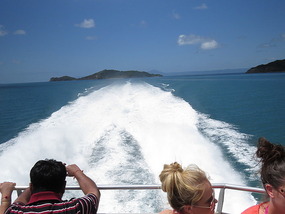
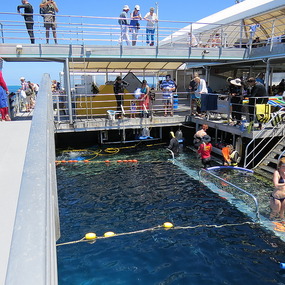
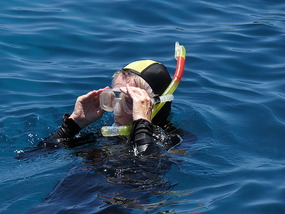
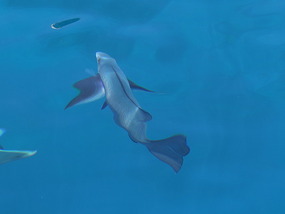
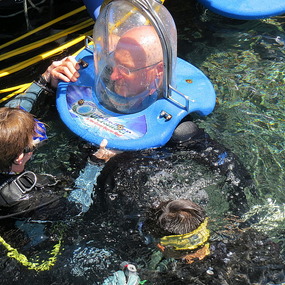
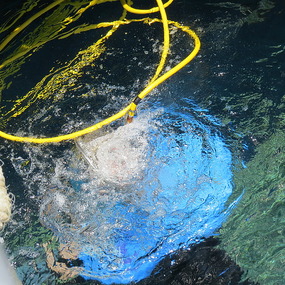
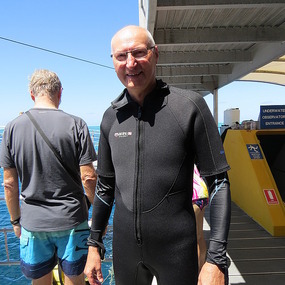

2025-05-23